- Email: sales@malharenterprises.net.in
- Phone: +91 9004684904
PLANTS
- Home /Plants
Plants
Kalmegh / Andrographis paniculata
Sanskrit : kalmegh, BhunimbaEnglish name : Green chirayta, creat, king of bitters, andrographis, India echinacea
Cultivation : It is widely cultivated in Southern and Southeastern Asia. It does best in a sunny location. The seeds are sown during May and June (northern hemisphere). The seedlings are transplanted at a distance of 60 cm x 30 cm.
Medicinal Uses : The herb has a number of purported medicinal uses,although research has found evidence of its effectiveness is limited to treatment of upper respiratory infection, ulcerative colitis and rheumatic symptoms; in particular,there is no evidence of its effectiveness in cancer treatment.
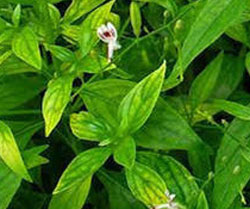
Giloy/Tinospora cordifolia
Sanskrit :Guduchi ,GiloyEnglish name : Gulancha Tinospora
Cultivation :The plant is a glabrous climbing shrub found throughout India, typically growing in deciduous and dry forests.
Medicinal Uses : In Ayurveda literature it is described as Amrita because of its innumerable medicinal properties. Giloy is anti-arthrtic, anti periodic, anti pyretic , digestive, anti inflammatory , blood purifier and has number of uses.

Van Tulsi/Ocimum Tenuiflorum
Sanskrit : TulasiEnglish name : Saint Joseph's Wort
Cultivation :Several other basils, including some other Ocimum species, are grown in many regions of Asia. The most notable is the holy basil or tulsi, a revered home-grown plant in India and Nepal.
Medicinal Uses :The leaves and flowering stems are strongly antiseptic, antispasmodic, carminative, cholagogue, diaphoretic, emmenagogue, expectorant, stimulant, stomachic and mildly tonic. The plant is taken internally in the treatment of colds, influenza, mild feverish illnesses, indigestion, stomach upsets and painful menstruation.
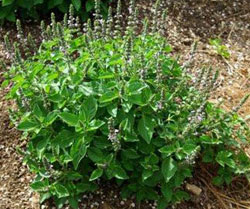
Bramhi/Bacopa Monnieri
Botanical Name:: Bacopa MonnieriFamily name : Apiaceae
English name : Thyme leaved gratiola, Water hyssop, Indian pennywort, Herb of grace
Part use : Panchang
Medicinal Uses: Bramhi is considered improves mental functions such as cognition,memory,intelligence,motivation,attention,and concentration.Bramhi has been used in ayurvedic medicine and in additional treatments for a number of disorders,particularly thoes involving anxiety,intellect,and poor memory.
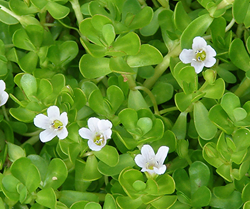
Bhui Amla / dhyllanthus emblica
Botanical Name:: dhyllanthus emblicaFamily name : Euphorbiaceae
English name : Country gooseberry
Medicinal Uses: The main alkaloids are in the form of lignins, like Phyllanthin and Hypophyllanthin. In many parts of the world it is used as a folk medicine to treat liver disorders particularly due to Hepatitis-B and Jaundice, intestinal infection, diabetes etc. In traditional system of medicine, it is one of the essential ingredients of many formulations used in the recovery of bronchitis, leprosy, asthma and hiccough.
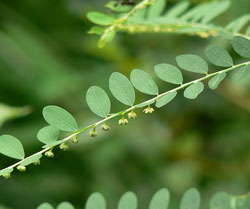
Chirayita / Swertia chirayita
Botanical Name:: Swertia chirayitaFamily name : Gentianaceae (Gentian family)
English name : Chirayita
Medicinal Uses: Its medicinal usage is reported in Indian pharmaceutical codex, the British and the American pharmacopoeias and in different traditional systems of medicines such as the Ayurveda, Unani and Siddha.
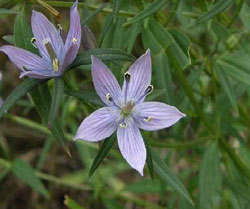
Arjun / Terminalia Arjuna
Botanical Name:: Terminalia arjunaFamily name : Combretaceae (rangoon creeper family)
English name : Arjun tree
Medicinal Uses: Every part of the tree has useful medicinal properties. Arjun holds a reputed position in both Ayurvedic and Yunani Systems of medicine. According to Ayurveda it is alexiteric, styptic, tonic, anthelmintic, and useful in fractures, uclers, heart diseases, biliousness, urinary discharges, asthma, tumours, leucoderma, anaemia, excessive prespiration etc. According to Yunani system of medicine, it is used both externally and internally in gleet and urinary discharges.
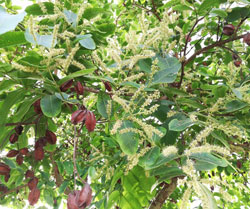
Babul/ Acacia Nilotica
Botanical Name:: Acacia niloticaFamily name : Legumes
English name : Babul, babool, prickly acacia, black piquant, egyptian acacia, indian gum arabic tree, gum arabic tree, thorn mimosa, thorny acacia, kikar, sant tree
Medicinal Uses: Babul bark finds its primary applications in oral & dental hygiene, burn injuries and in the management of skin diseases as recommended by Indian Ayurveda. Being an astringent agent, twigs of Babula have been used in India as natural toothbrushes. Such use has been time-tested approach in prevention of bleeding gums.In burn injuries, use of Babula bark powder has been a trusted remedy.It is believed that, Babula hastens the healing process of burn injuries and minimises the scar formation. Decoction prepared out of Babul bark is employed for cleansing infected wounds.Internal use of Babula is recommended in treatment of skin diseases.

Ashok / Saraca Asoca
Botanical Name:: Saraca asocaFamily name : Caesalpiniaceae
English name : indian gum arabic tree, gum arabic tree, thorn mimosa, thorny acacia, kikar, sant tree
Medicinal Uses: The meaning of Ashok in Sanskrit is without grief/ sorrow less. Each part of the tree is of proven medicinal value and cures many disorders; hence it is called Ashoka. The bark is comprised of sodium, silica, magnesium, iron, calcium, aluminum and strontium. Other components include sterol, tannins, catechol and other calcium compounds.As one would expect from a tree of the country it has many useful medicinal properties. The juice obtained from boiling the bark is a cure for some ailments of women, and a pulp of the blossoms is one of the remedies used for dysentery.
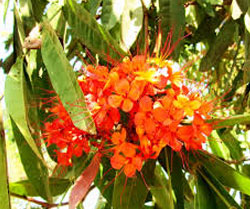
Isabgol / Plantago Ovata
Botanical Name:: Plantago OvataFamily name : Plantaginaceae
English name : Psyllium
Medicinal Uses: TIsabgol has several therapeutic benefits. In folk medicine and ayurveda, it is widely used.The first line of treatment of constipation is dietary changes including high fiber diet and fruits & vegetables. When it fails, physician may first recommend using Psyllium Husk.The first line of treatment of constipation is dietary changes including high fiber diet and fruits & vegetables. When it fails, physician may first recommend using Psyllium Husk.
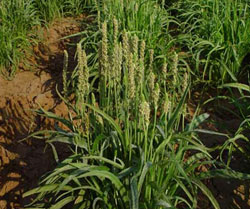
Dev Daru / Cedrus Deodara
Botanical Name:: Cedrus DeodaraFamily name : Saralakula (Pinaceae)
English name : himalayan cedar, deodar cedar
Medicinal Uses: Deodar is used in Ayurveda for treatment of inflammation, paralysis, kidney stones, fevers, external injuries, low appetite, cramps, diabetes, fever, fungus, bacteria, infections, water retention etc. It has antispasmodic, anti-poison, and anti-inflammatory properties. The anti-inflammatory and antispasmodic activity of Deodar is due to the presence of many compounds such as allohimacholol, centdarol, himachalol, himadarol spasmolytic etc. The wood oil is anti-inflammatory as it stabilize mast cell and inhibits synthesis of leukotriene. In inflammation, filarial, glandular diseases, a paste of deodar is made with mustard oil and applied on the affected areas.
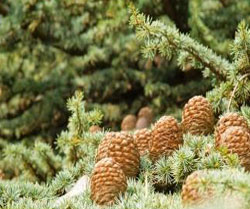
Bakul / Mimusops
Botanical Name: MimusopsFamily name : Sapotaceae (Mahua family)
English name : Spanish cherry
Medicinal Uses: Various parts of the tree have medicinal properties. It is used in the treatment and maintenance of oral hygiene. Rinsing mouth with water solution made with bakul helps in strengthening the teeth. It also prevents bad breath and helps keep the gums healthy.


